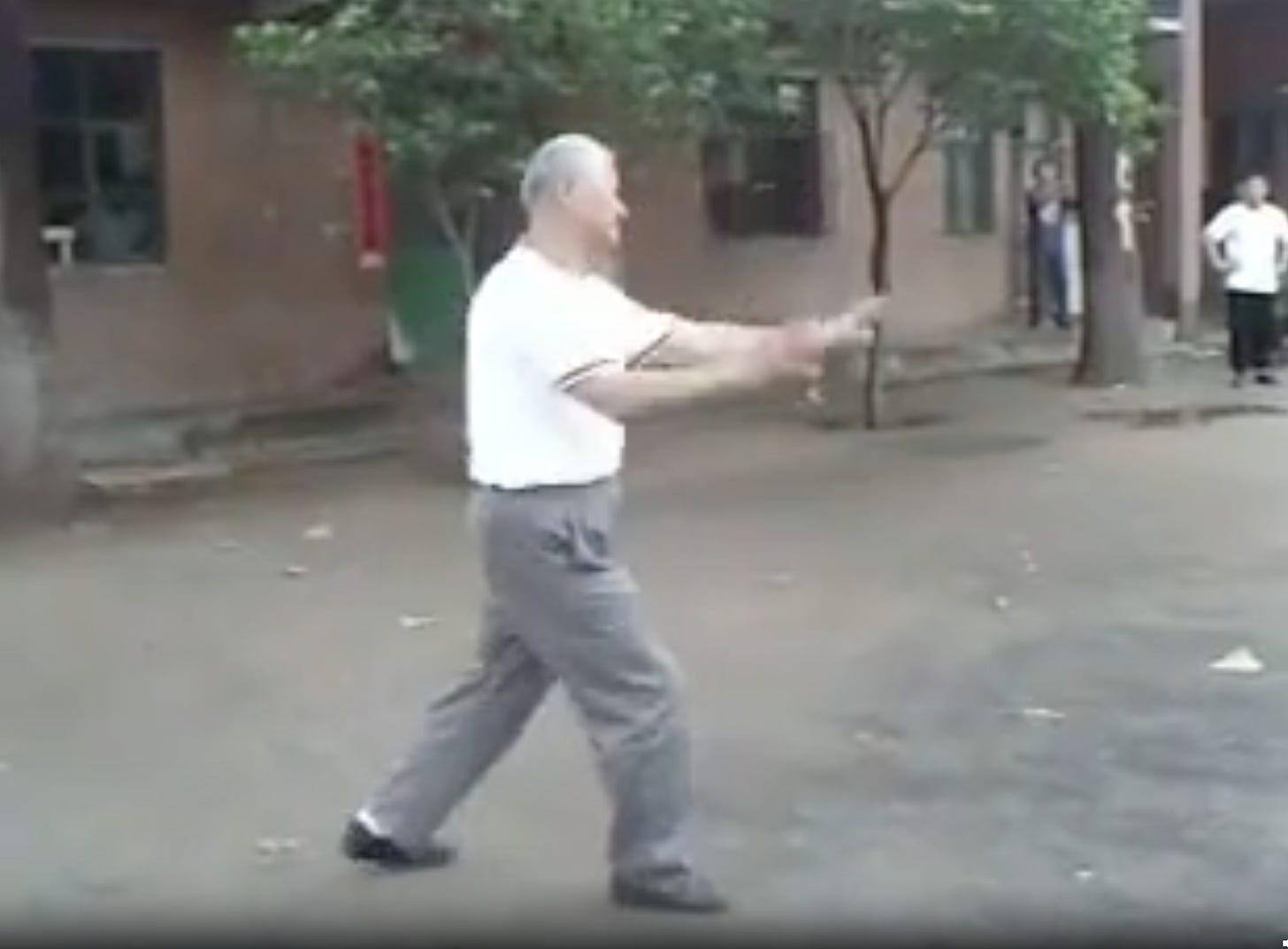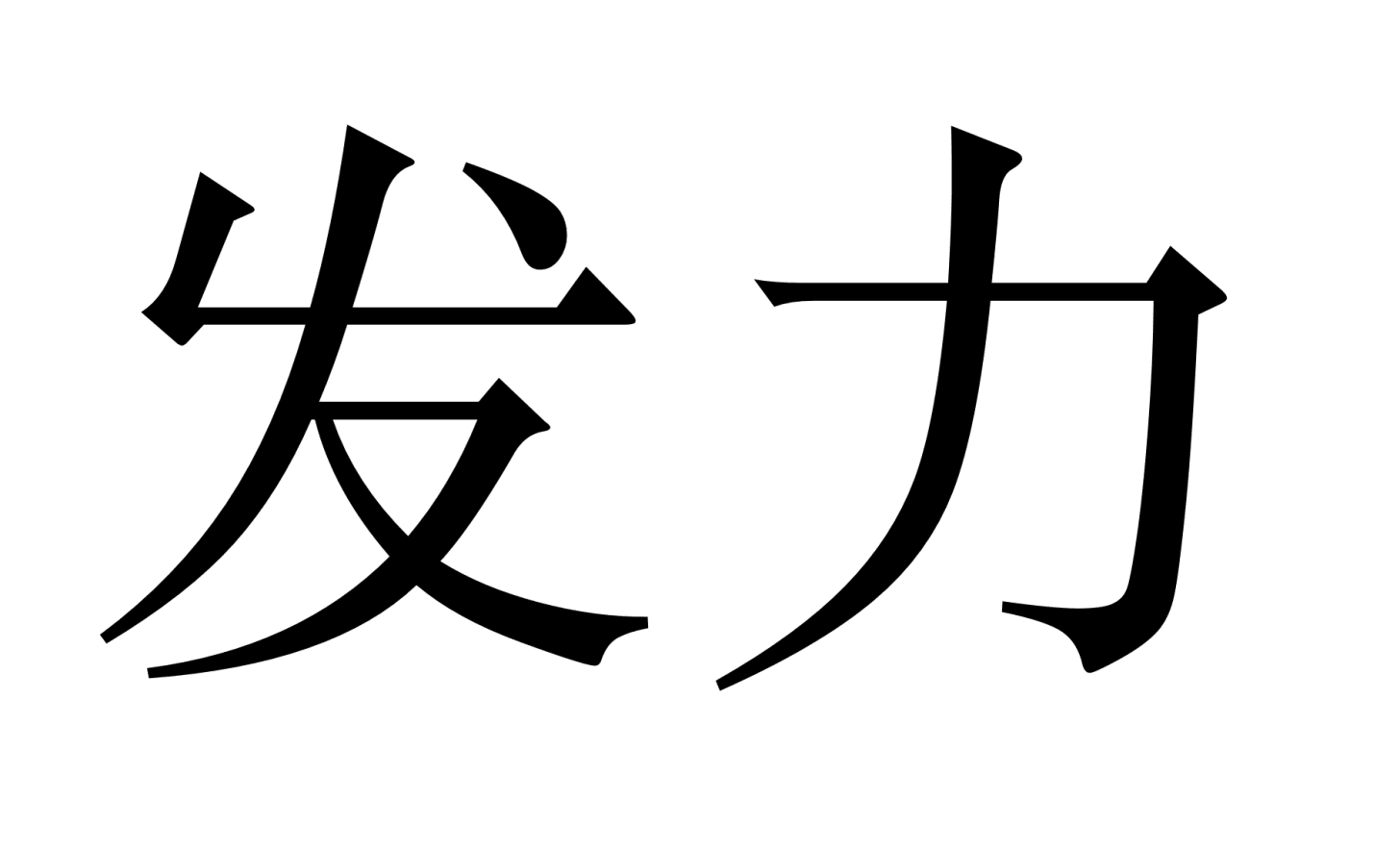During my career as a chi kung instructor, I was regularly asked to give a teaching contribution at martial art festivals, symposia or congresses. The end of such events was often set aside for demonstrations, given by the participating teachers. It was always fun - and sometimes more than fun - to see the various martial arts demonstrated. Tai Chi Chuan form in various styles, Ba Gua, sword form, stick form, pushing hands, Hsing I Chuan and more.
Although my guest classes at conferences and festivals were usually well received by participants and organisers, requests for a demonstration generally failed to materialise. After all, what is there to see about someone standing still for a few minutes? 'Zhan zhuang', standing chi kung, as a viewing event belongs to the same category as 'watching grass grow' and 'snail race'. For the practitioner, 'zhan zhuang' may be the entry point for deep self-examination, but it remains a highly individual experience, and it does not really seem suitable for demonstration.
Clarification is appropriate here.
'Zhan zhuang' 站樁, the cultivation and practice of standing postures is like preparing the instrument, in this case the body. A significant part of I Chuan training time is spent on it. So much so, that 'zhan zhuang' and I Chuan are easily confused with each other.
I remember reading an article long ago in which, Miles Davis was asked where he kept getting these wonderful young musicians. Many, after having played and toured with him, would have wonderful careers as solo musicians or bandleaders: Dave Holland, Tony Williams, Joe Zawinul, Wayne Shorter, Herbie Hancock, John Scofield etc etc. He told how he watched the way they held their instrument, how they sat behind their instrument. There was apparently no need to play a note and it was clear to him how it would sound.
'Zhan zhuang' is like producing only one tone.
As a 'zhan zhuang' instructor, I became aware over the years, that cultivation through immobile standing postures was ideal for a certain group of practitioners. Before coming to classes, they had already experienced some martial tradition, sport or dance. They had already intuitively understood that the quality of movement is found in how the structure of the body is recognised and used. In classes, as an instructor I did not have to peddle and promote the 'zhan zhuang' to them; their motivation was intrinsic. Another part of the aforementioned group consisted of students from artistic backgrounds: singers, instrumentalists, designers, writers. They too understood almost immediately that there was a world to be gained by practicing the silent postures.
Unfortunately, there were also many who dropped out of classes already after a short period. Too boring, snail race, sport for zombies, standing until you weigh an ounce (like the Dutch saying goes). And I usually couldn't blame them. Just as I could not fault the organisers of the congresses and festivals if they did not invite me to a concluding public demonstration.
There are five steps to take after the 'zhan zhuang' to achieve being able to perform such a demonstration.
After learning to handle the instrument and produce a raucous tone or a raucous hit, comes the chapter of transitioning from one tone to another. Like in a scale, in a chord sequence or in a melody. There are an infinite number of possibilities for this, but the advice now is to start simple and commute between two chosen tones.
Within the I Chuan, this is called 'shi li' 試力, literally 'testing the strength', 'testing the potential possibilities'. 'Shi li' is going back and forth between two tones, between two chords, between a tone and a consonant, between a tone and a dissonant. The repetitive movement, eventually in circular form, is performed slowly and thus magnified.
Fast is simple, try slow first. Stretch the movement, by slowing down time. Expand the timeline and the resolution of the movement will become higher. By investing more and more in the 'shi li' approach and integrating it with the standing postures, that resolution will grow a little bit at a time. Gaps can be filled, weaknesses repaired, misconceptions about one's own body straightened out.
‘'Shi li' training looks like time after time the needle skips through a scratch on a vinyl record. It sounds like minimal music. Slow repetition. I believe that in Tai Chi traditions, this phenomenon is called 'reeling silk'. As far as I am concerned, an appealing name.
All possible internal connections between parts of the body are touched upon and made conscious one by one by 'shi li'. Returning to the 'zhan zhuang' practice, all those regained and strengthened connections are activated and made usable for action.
The third component of I Chuan is similar to 'shi li'. Whereas the latter focuses on the upper body, 'zhou bu' 走步 allows the practitioner to retrieve and test the internal connections in feet, legs and pelvis. Through the 'shi li' the higher and middle registers are developed, using the 'zhou bu' the lower tonal range.
All power and movement becomes fully visible and manifest in the upper body, but originates in the legs. 'Zhou bu' is thus a crucial part of I Chuan. It consists of a limited number of repetitive steps and stationary pumping movements of the legs. Good leg work is unremarkable and it is often overlooked, just like in music the bass line. But if it is missing, or poor in quality, the music will collapse like a house of cards.
Listen, and watch, to the bass line in Bach's Brandenburg Concert #6.
Or watch and listen to the modest but brilliant bass lines of James Jamerson, bassist on virtually all golden Motown music.
‘'Shi li' and 'zhou bu' are performed extremely slowly, the timeline is stretched, the resolution of each movement is thus made as high as possible. The action made can then be optimally 'viewed' and inserted. It then becomes 'consciously competent'. Then, using the tools of the fourth segment of I Chuan, the action becomes internalised, shifting to the 'unconsciously competent'.
Unconscious, automatic, you can dream it. Conscious, slow movement is condensed into a flash. Like sneezing or pulling your finger back when you are in danger of getting burned. This is called 'fa li' 发力 or 'fa jing', explosion power. The music that might have sounded contrived and manufactured before suddenly takes on brilliance and spontaneity. You would expect a high degree of concentration, but there is rather the opposite. Or put another way: the concentration is not mental, but carried by the body as a whole.
Then we come to the fifth platform: the field of interplay. Until now, it was you deciding when to start the movement. You decided its direction, speed and power. But now there is a fellow player, who no doubt has other plans and wishes. This soon leads to clash and conflict, but what would happen if you listen and follow what your co-player sets in motion? 'Tui shou' 推手 takes the practitioner from speaking to listening, from initiating to following.
'Tui shou' has different translations - pushing hands, sensing hands - and different modes of execution - single pushing hands, double pushing hands, moving pushing hands. Its essence is to apply all the above - zhan zhuang, shi li, zhou bu and fal li - in a living environment.
Making music alone. Making music with others.
A long while ago, I saw the Balinese gamelan group of I Made Djimat performing. The musicians and dancers came from one village, many were related to each other. I closed my eyes, and heard one person playing.
Pat Metheny and Charlie Haden, both a lifetime of music behind them. Who leads and who follows is no longer in question in Beyond the Missouri Sky.
And then: the skill in your fingertips, good technique, musicality, rhythm and dexterity - but still something is missing. 'Shi sheng' 試聲 training clears the last reservation, it helps to let the action come out of the toes. Within the I Chuan, it teaches how to use the voice, how to focus the outgoing energy, where to let the power come from. This last ingredient adds a pinch of persuasion.
As Zen master Dogen put it: act as if it is the very first time, do it with beginners' minds. And at the same time: act as if it is the last opportunity given to you. As if the devil is on your heels. The body, breath and mind melted together as one. No frills, but compact and sincere and simple action.
And finally: what it was all about, the demonstration. This seventh platform is called 'jian wu' 健舞, 'martial dance', the 'health dance', the seventh stage. It is the spontaneous application of the previous six commands, the previous six levels of training. The 'jian wu' as a demonstration cannot be imitated, no gold standard can be followed, there is no established form. Even the 'jian wu' of one and the same practitioner is never the same twice.
Watch and enjoy a magnificent 'jian wu' demonstration by one of the old masters, Cui Rui-Bin, below. You may be able to recognise the 'zhan zhuang', the 'shi li' and 'zhou bu', the 'fa jing', the 'tui shou', and the 'shi sheng' in it.











